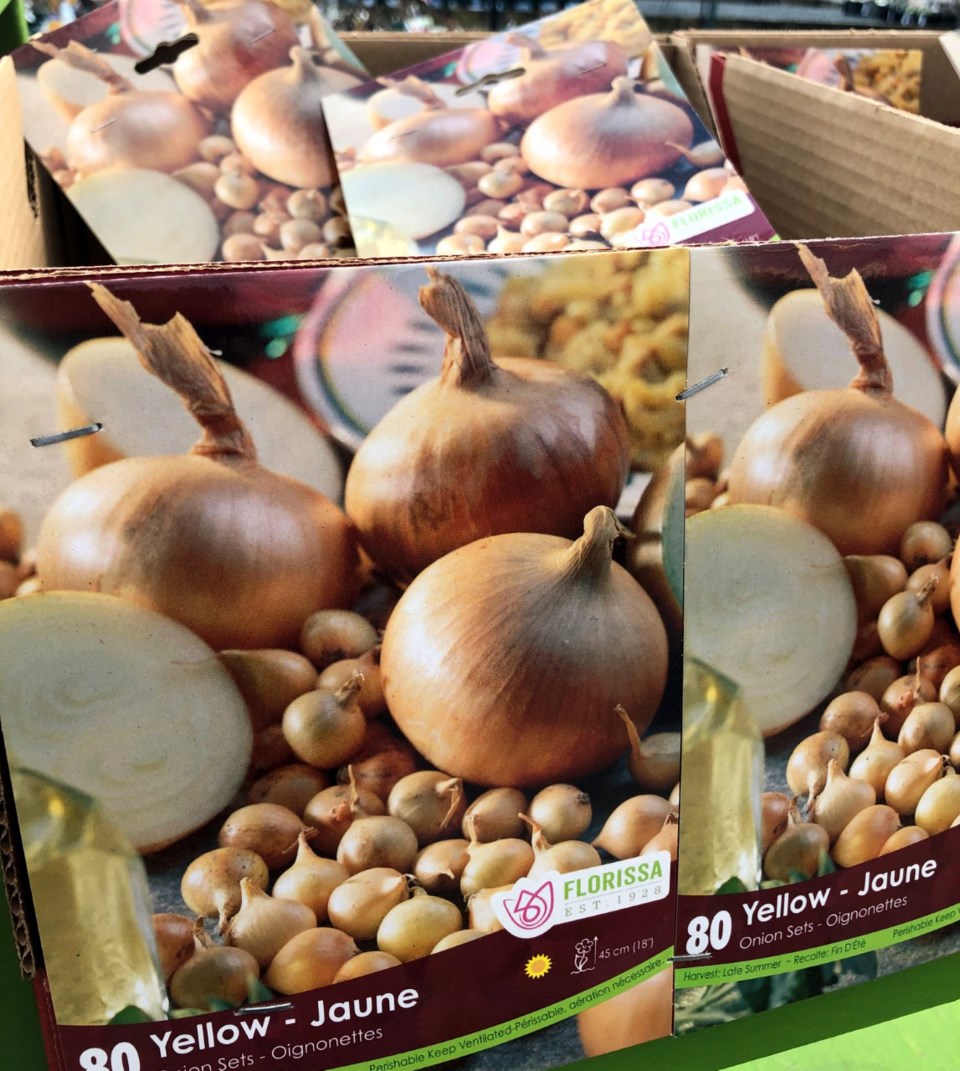The following informational column was submitted to the Tri-City News from Brian Minter — master gardener, best-selling author, Order of Canada recipient and co-owner of Minter Country Garden Store.
Starting your onions from seed can give you the greatest diversity of varieties, sizes and flavours.
If this doesn’t work for you, you can also use onion ‘sets’ which are bulbs started a year prior. They are lifted, stored and then made available for planting out in this year’s spring garden. They are more generic type varieties that come in red, white and yellow sets, as well as multipliers for greens and shallots.
As for which varieties to grow, there are more than 1,000 choices from around the world, and they come in all sizes, flavours and sweetness.
‘Walla Wallas’, one of the hardiest varieties, are, perhaps, the most popular yellow onions grown in the Lower Mainland. To produce larger sizes, they are often planted in late summer and left to overwinter in the garden.
The open-pollinated ‘Riverside Sweet Spanish’ is a mainstay onion grown across our country. A good keeper, it measures about 13 centimetres across, has one of the mildest flavours and is one of the most productive, both in our gardens and commercially.
A larger variety, called ‘Candy’, is very mild and sweet and is touted to have one of the highest levels of antioxidants.
In terms of red onions, ‘Rubillion’, a great keeper, is not only red on the outside but is also a rich dark red on the inside.
West Coast Seeds likes ‘Redwing’ and ‘Cabernet’ because both store well and have great flavour. They are also promoting ‘’White Wing’, not only because of its great size, but also for its pungent flavour and great storage capability.
For other big onions, the old ‘Ailsa Craig’ has a mild, sweet flavour and often grows up to 20 centimetres across. It, too, keeps fairly well.
Bragging rights, however, belong to the ‘Kelsae Sweet Giant’, which, at over 6.8 kilograms, holds the world record for the largest onion. I love its flavour and its firmness… and yes, it’s a nice onion to show off.
Using a nutrient (organic or regular) that is lower in nitrogen and high in phosphorus and potash will help size up your bulbs. Letting your onion transplants get established first will ensure they utilize the nutrients most efficiently. At this time of year, you’ll also find started seedlings ready to set out.
Stokes Seeds in Thorold, Ont., is one of Canada’s largest commercial seed suppliers. They were also the first to supply hybrid varieties to Canadian growers back in the Fifties. They have introduced early, mid and late season hybrids in order to extend production periods. In addition, they supply red, white and yellow onions to Canadian and U.S. growers.
According to 2009 data from the University of Guelph in Ontario, 14,210 acres (5,750 hectares) were devoted to onion production in Canada, resulting in about 250,000 tons that had a value of approximately $60 million.
Ontario, Quebec, Manitoba, Nova Scotia and British Columbia are the main onion producing provinces.
When commercially grown onions are ready to be harvested in August and September, they are mechanically pulled out of the ground and left there to cure anywhere from two days to three weeks.
Despite this initial curing, most onions are put through an artificial curing at 26 to 32C for one to three days and then cooled to zero degrees centigrade before being stored at 65 per cent relative humidity. This process allows Canadian onions to be easily stored for 10 to 12 months.
About 80 per cent of the crop goes into storage and is sold from November to April. This scenario is helpful because it gives us a sense of timing and storage possibilities.
Onions are one of the most efficient garden vegetables. They take up little space and can produce huge returns, making them ideal for smaller space gardens.
Now is the time to start planning for a nice crop of homegrown onions and, perhaps, some bragging rights, too!





